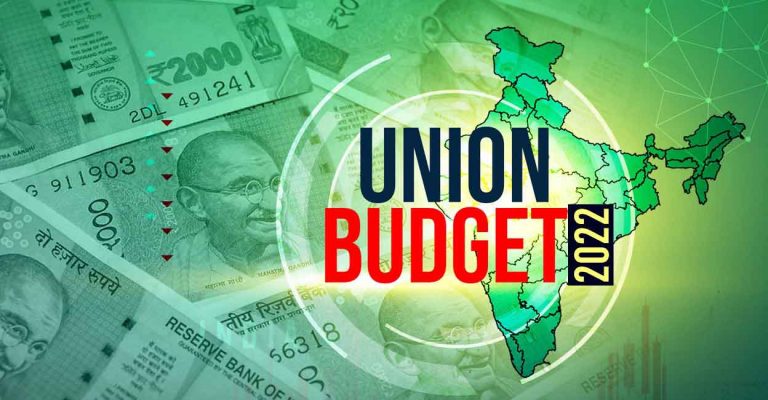While the country is being steered towards global economic growth, is the average citizen being snubbed by taxes, again?
Amidst the ongoing third wave of COVID-19, the Union Budget 2022 sets a defining way forward for the Indian economy. Every common man’s attention will be drawn to the cheap and expensive, as well as the impact of this budget on his pocketbook, in the Budget 2022. Finance Minister Nirmala Sitharaman officially launched a Rs 39.45 lakh crore Budget 2022, with increased spending on highways and affordable housing to rev up the economy’s key engines and sustain a world-beating recovery from the pandemic. Sitharaman did not change income tax slabs or tax rates while ramping up infrastructure spending to create jobs and boost economic activity. Industry experts, market watchers, and the common man have expectations that collectively focus on economic revival and tax relief. Were those expectations met? From taxation points to important returns, here are all of the major takeaways from the Union Budget 2022 for you to consider.
Economic Growth Per The Union Budget 2021-2022
The Union Budget presented by Finance Minister Nirmala Sitharaman is paving the way for India to be on par with globally competitive and advanced countries. The Economic Survey suggests that economic growth is resilient at 9.2% in 2021-2022. The International Monetary Fund (IMF) also bears testimony to this with 9% GDP growth projections, making India the fastest growing economy in the world.
Capital expenditure growth increased by 35.4% to INR 7.50 lakh crore in FY23, from INR 5.54 lakh crore in FY22. Overall, there’s a 30% Capex growth over FY21 showing a nod of approval for the investment-led growth approach over consumption-led growth. India, like many other countries, adopted the consumption-led approach in 2008 to recover from the global financial crisis. This led to a period of high inflation in the country making it abundantly clear that this approach is not sustainable in India. After learning from past mistakes, the country is dedicated to taking an investment-based approach as a response to the pandemic. As one of the benefits of this approach, the Emergency Credit Line Guarantee Scheme (ECLGS) increased by INR50,000 crores to INR 5 lakh crore, extended till March 2023.
The fiscal deficit for FY22 grew from 6.8% to 6.9%, further estimated to reach 6.4% in FY23. This also indicates the government’s focus on investment-led growth and realism, keeping the ongoing impact of COVID-19, geopolitical challenges, and the upcoming rate hike cycle.
Any Tax Break For The Common Man?
Hailed by experts for its focus on growth and investment, nothing has changed in terms of personal taxation and existing tax slabs. However, there is a big change for people who are riding the wave of digital assets like cryptocurrencies and NFTs.
For any income incurred from the transfer of digital assets like Bitcoin and Ethereum, the income tax levied will be at the rate of 30% plus surcharge and cess. This is of great significance as India has approximately 20 million investors with estimated investments that amount to US$10 billion.
With regards to income tax returns, the budget has proposed to introduce an “updated tax return” under Section 139(8A). This will enable taxpayers to revise their tax returns and file the updated returns within two years from the end of the assessment year. This measure reduces tax litigation and helps people who have not reported income.
Job Creation As A Priority
The Finance Minister announced the Production Linked Incentive Scheme for Atmanirbhar Bharat that will create 6 million jobs in 14 sectors, with additional emphasis on Solar PV module manufacturing. If executed well, this will promote job combustion that the country needs, faring well for the youth and the economy. The reduction of several compliances, repealing union laws, one nation – one registration scheme, interlinking Udhyam, E-shram, NCS, ASEEM portals to create a seamless workflow are motivating factors for employers and the workforce. Tax exemption for startups till March 2023 and focus to develop FinTech and digital economy welcomes the ambition of rapid urbanization.
Union Budget Highlights
Here are the key takeaways from India’s new finance budget.
General Announcements:
- Gross GST collections have reached a record of INR 1.41 trillion, the highest since 2017.
- RBI backed digital rupee using blockchain will be launched in FY23
- INR 48,000 crore allocated to housing projects under PM Housing Scheme for FY23
- 75 digital banking systems will be set up in 75 districts by scheduled commercial banks
- Post offices will now have core banking services
- Concessional duty on import of capital goods to be gradually removed
- 68% of capital outlay for the domestic defense industry
- Issuance of e-Passports using embedded chips for convenience travel
- Push for electric vehicles by battery swapping policy
- Preparations to roll out 5G
Taxation Announcements:
- No change in tax rates, wealth tax, and inheritance tax.
- Considerable reduction in the surcharge for long-term capital gains, from 28.5% to 23.92%.
- No change in corporate tax rates
- Beneficial tax rate of 15% on corporates on foreign dividends discarded
- Surcharge on long-term capital gains set at 15%
- 1% TDS on transfer of virtual assets and income earned from cryptocurrencies and NFTs to be taxed at 30%





















